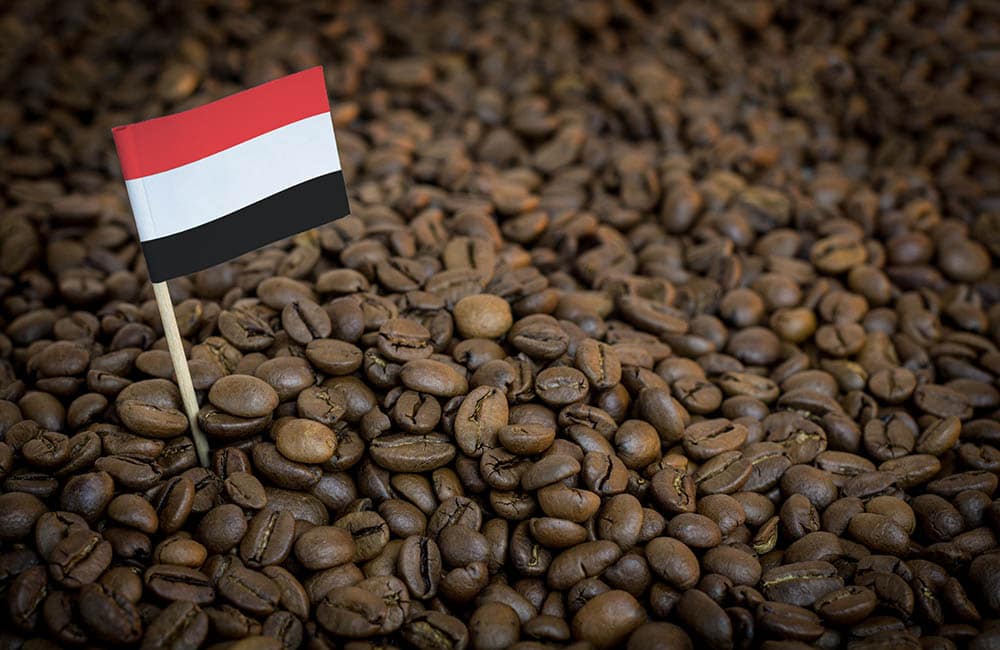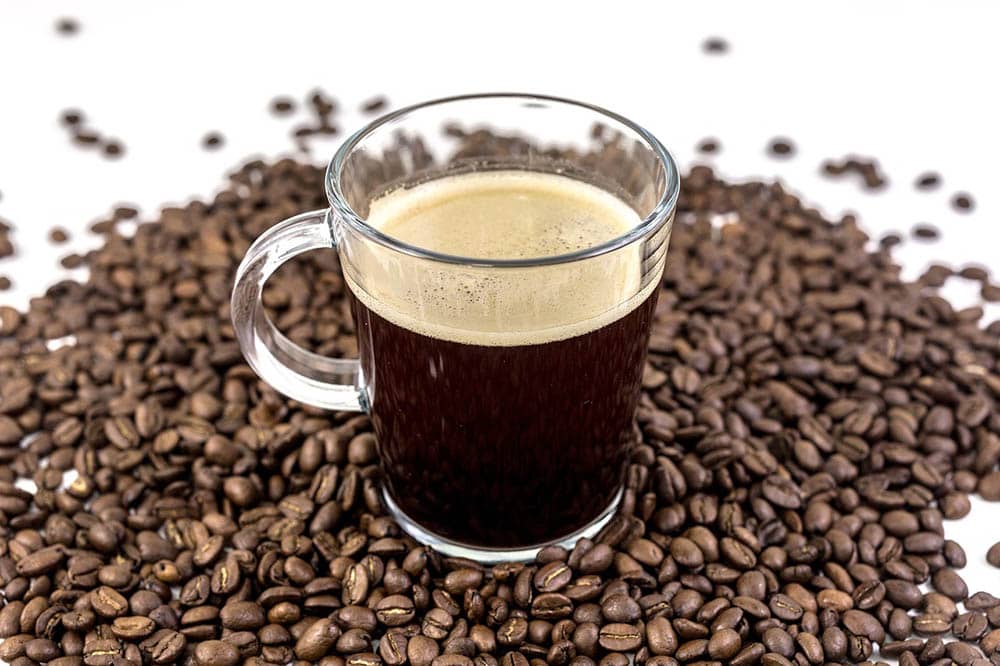
If you are a coffee-lover, you understand the welcoming feeling coffee provides when you’re trying to wake up. For those who love the taste, a cup of coffee can be enjoyed at any point throughout the day and is often used as a comfort, or for the pick-me-up the caffeine inside provides when you’re starting to feel a bit rundown. But have you ever wondered where the coffee inside your cup comes from?
Over the years, the coffee trade, and areas that flourish thanks to the production of coffee have changed quite a bit. During the earliest years of the coffee trade, Yemen coffee and its famous Mocha were all the rage. Like with so many regions of the world, Yemen isn’t the coffee exporting powerhouse it once was, but that doesn’t mean there aren’t still cultivators in the area working diligently to put their coffee in your cup.
Let’s take a look at the history of Yemen coffee and some of the flavors this region of the world put into your cup. We’ll even discuss a few brewing tips to help you make the best cup of Yemini coffee possible. You may find yourself a new favorite coffee brew once you try it. If not, you’ll at least leave with a better understanding of what the people of Yemen have done to help make coffee the most popular drink in the world.

The History of Yemeni Coffee
Many experts believe that Ethiopia is where coffee originated, Yemen is often given the distinction of being the region where it truly blossomed. One of this African country’s ports even gave a name to one of the most popular coffee flavors many of us enjoy. That’s how important Yemen has been to the cup of joe you could be enjoying at this very moment.
The story of Yemen coffee begins with Sufi monks. Around 1450, these monks cultivated and brewed some of the earliest coffee. It is claimed these monks then infected the rest of the surrounding region with their love of this new drink. Whether this story is true or not, the results were clear. Yemen became a powerhouse in the coffee world.

What’s the Most Famous Yemen Coffee City?
While it’s clear Yemen is no longer the coffee powerhouse it once was, that doesn’t mean its history isn’t still prevalent today. Perhaps the most famous Yemen coffee city is best known for giving one of the most popular coffee flavors in the world its name: Mocha.
Mocha, also known as al-Mukha, is a port city that borders the Red Sea on the southwestern border of Yemen. Founded in the 1300s, Mocha was known as the hub for the European coffee trade in the 1700s but has always been known for its coffee exportation, even in the early years of the coffee trade in Yemen.
As we’ve mentioned, the monks helped spread the love of coffee throughout the world. Considering most of Yemini coffee was exported from the port in Mocha, it was only natural for the coffee from the region to take the name of the port and thus, the popular flavor mocha was born.
How Does It Taste?
Yemen’s organically grown coffee is known to most as Yemen mocha. When it comes to flavor, these beans are full-bodied with a complex, earthy taste. The acidity is winey and rich. When enjoying Yemini coffee, you’ll taste a wide variety of flavors. Hints of cinnamon, spices, raisins, and especially the defining note of chocolate are all noticeable when enjoying these beans. Surprisingly, you’ll even find this coffee is accompanied by slight notes of an earthy, tobacco-like overtone.
The chocolate flavoring in Yemen coffee is one of the reasons it rose to popularity. This taste not only gave the most popular port in Yemen its name, but it also led those attempting to recreate this rich flavor to add chocolate to drinks. These attempts to recreate Yemini coffee are what gave the world the term, “mocha.”

More to Yemeni Coffee
While the mocha flavor of Yemen coffee helped make coffee popular, it isn’t the only specialty this region of the world has to offer. Have you ever heard of, or tried, white coffee? If not, you could be missing out.
White coffee is one of the biggest trends in the world’s most popular coffee shops. It’s talked about as a health fad and even as a way to experience peak caffeine when it comes to coffee. But did you know it originated in Yemen? The name of this coffee may lead you to think it needs sweeteners and creamers added to give it the light color it is known for. That isn’t the case. The color comes from the roasting process, which is considerably shorter than that of other coffees. White coffee is roasted at 325º F and must be ground with a special grinder afterward due to how hard the beans are after the roasting process.
The taste of this coffee is described as nutty with lots of acidity and minimal bitterness. This roasting process also stops the bean’s natural sugars from fully caramelizing. This reduces any aftertaste and promotes flavor. In Yemen, where this originated, white coffee is normally served with hawaij, a popular spice mix of the region.
Growing Coffee in Yemen
Most of the coffee farms in Yemen are small and wild. These farms are located on terraced mountainsides where the ancient varieties of Arabica beans can truly flourish. Most farmers work the beans themselves, handpicking cherries during harvest time.
Thanks to the microclimate of the area, the plants produced are very drought-resistant. Harvest normally takes place in November and December. Once picked, farmers usually sun-dry their beans themselves. In most cases, this takes place on the roofs of local farmers’ homes or barns.
Here is a look at a few of the most popular Yemeni coffees grown in the region and what they have to offer coffee lovers.
- Sanani Coffee – grown near the capital city of Sana, this coffee has a fruity taste, medium body, and is typically less acidic than other Yemeni coffees.
- Hazari Coffee – grown in the mountainous western regions, this coffee is fruity and light and features a winey acidity.
- Ismaili Coffee – this coffee is of the tree variety and is grown in central Yemen. The pea-like coffee bean is of high quality and is bright and berry-like.
- Yemen Mocha Matari – the most famous bean grown in Yemen comes from Bani Mattar. They are full-bodied and highly acidic with the wine and chocolate notes Yemeni coffee is famous for.
Brewing and Roasting Tips for Yemeni Coffee
While Yemen coffee can be roasted lightly, to fully get the most out of these famous beans, it is best to go with a darker roast. With these beans, the more you roast them, the more flavor and aroma are drawn out. This will provide you with the acidity and flavors you’re hoping for with your coffee.
When it comes to brewing Yemeni coffee, you can use most machines and methods. However, with how these beans favor medium and dark roasts, many say brewing espresso with these beans will give you the full effect and flavor of the coffee beans.
The Current State of Things in Yemen
Yemen may have been considered the home of coffee centuries ago, things aren’t quite the same in the country currently. The people of Yemen still grow coffee, but things have declined greatly since the country’s heyday back in the 17th century.
Currently, civil unrest and illness in Yemen are what’s keeping the country from fighting its way back to the top of the coffee world. With constant fighting and the people of Yemen struggling health-wise, it is understandable that coffee isn’t what it once was. That doesn’t stop the dedicated farmers from working and doing their best, however.

In Conclusion
As you can see, Yemen coffee is unique and flavorful. Whether you want the taste of mocha which the country made widely popular, or simply a dark-brewed coffee that is delicious, Yemeni coffee is the one for you. If you haven’t given this wonderful coffee a try, you should. If you’re a fan of this yummy brew, the above information may help you brew the perfect cup of Yemeni coffee.
See Also: Coffee in Scotland: History, Flavors & Brewing Tips
Featured Image Credit: BERMIX STUDIO, Shutterstock















